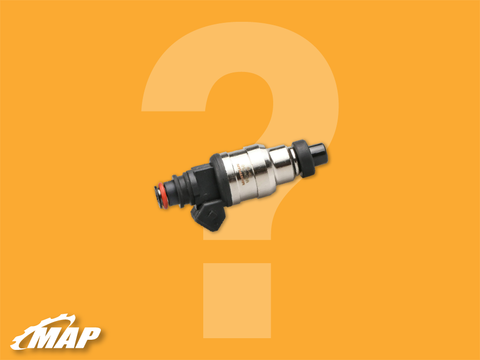What are front struts?
The front struts on your vehicle are some of the most essential components of the front suspension. The primary purpose of the struts is to support the front axle and allow it to move up and down with ease. A vehicle's front struts also help keep the tire in contact with the ground, which is very important for safety. They are usually located near or under each wheel well. They look like long metal rods and are usually supporting a spring on either end. As for that spring, Front struts are often paired with coil springs, which provide additional support for heavy loads or when driving over rough terrain. We’ll explore struts and their function as well as common problems that can arise with these components.

Macpherson struts
MacPherson struts are one of the most common types of struts in use today. This design features an integrated shock absorber and steering rod behind each wheel, connected by a single coil spring with the primary function to absorb impacts on uneven terrain or sudden stops. It combines steering and suspension vibration dampening. In older suspension systems, a vehicle had separate components for both roles. With the MacPherson Strut, both functions are accounted for with one component.

Though essential, shocks do just one thing: smooth out the ride by controlling how much force drivers experience when going over bumps. Shock absorbers also minimize the front of the vehicle dipping upon braking and acceleration weight transfer. They’re separate, independent components that can be paired with bars, springs, or coils and are usually cheaper than struts.
A car may have both front and rear shock absorbers, but most new vehicles have front struts in place of front shock absorbers. Front struts guide the wheels, keep the wheels on the ground and from bouncing up, and allow the front of a vehicle to be raised or lowered. Struts are mounted to the top of the chassis at the front-end of most cars, so unlike a shock, a strut is part of the vehicle's structure. While heavy vehicles like trucks use shocks more commonly, struts are more applicable to lighter cars.

Struts vs Coilovers
When it comes to coilovers vs struts, you can do more than just control and enhance your driving and steering with coilovers. You can simply adjust your ride height as well. The main difference between coilovers & struts is the adjustability of coilovers. Most coilovers allow you to upgrade your shock valving to a competition-grade of high and low-speed custom adjustments. You'll also have the option to change springs on coilovers to fine-tune spring rates. All of that combined with an easy, lighter assembly and fully serviceable parts makes coilovers a great add-on.
What are the symptoms of bad front struts?
Coil springs ease the transfer of force when a car drives over bumps, potholes, or rough terrain. The vehicle’s shocks and struts control the momentum and movement of the springs so that the tires stay locked to the ground. When these parts are loose or need a replacement, the tires will often lose contact with the road, making for an uncomfortable and potentially dangerous ride. Worn struts can cause many issues–like a whole plethora of noises and quite the rough ride–to the point where a simple joyride is incredibly uncomfortable. Some symptoms and common suspension problems to look out for are:
Strut noiseWhen going over bumps or potholes in the road, worn strut noises are usually reported as a low-pitched thudding/banging. If you experience a loud creaking sound when turning the steering wheel, this could be an indication of bad strut mounts. A defective strut mount is typically caused by corrosion and rust in these joints which cause them to warp or loosen over time.
Bumpy rideThe movements from suspension springs are not properly controlled when the strut isn't doing its job. They're choppy and unpredictable, resulting in a bumpy ride. But a rough ride is a telltale sign of suspension issues in general, so be on the lookout for additional accompanying symptoms like noises and:
Unusual tire wearWhen your car's struts are wearing out, the car can bounce up and down creating high and low spots on the tread (cupping), and your tires won't grip the road well. The bouncing accelerates tire wear and can throw off the alignment as well.
Poor braking performanceWith bad struts, there is not enough force being absorbed by the spring and cushioning to reduce speed as quickly. This leads to brake pads wearing down much faster while also increasing stopping distances dramatically
Hydraulic oil leakStruts use hydraulic fluid to maintain performance and control dampening. The seals on struts can wear out and fail over time, causing a leak. If your struts are leaking, you’ll see an oily residue building up near the broken seal or cause of the leak.
Can you drive with bad struts?
We don’t advise driving on worn-out struts. You can commute from A to B, but if your struts go un-replaced over an extended period of time, your suspension system could develop misalignment issues or additional damage that could be very expensive to repair. If you do drive with bad struts, here are some precautions to take on the open road for a better ride quality:
- Drive slow and don’t be in a rush to get to your destination. Heavy acceleration will cause that “thudding” noise and your braking performance can be slowed, so it’s potentially dangerous.
- Be cautious when turning and driving around corners. Worn-out struts can cause one side of your vehicle to lean further into a turn. Vehicles have rolled due to worn-out struts, so be careful.
- Keep in mind that driving on bad struts can cause damage to the wheels, resulting in a flat or blown tire. It can also put stress on the rest of your suspension system, like coils, bars, and shocks. It's best to address the issue as soon as possible.
Going off of average parts cost with labor worked in, the front strut replacement cost range is $400 to $1200. A high-quality individual strut assembly will cost about $200 to $500, and potentially more for features like rear camber adjustability, lift options, and materials.
Struts for Honda CivicIf you’re looking for aftermarket Honda Civic struts or other suspension components, you’ve come to the right place. Our team has decades of experience making that beast of a four-cylinder roar, and we want to be there for you every step of the way as your one-stop Civic shop. We offer high-quality Civic struts like the Airtech Air Suspension Struts or the Koni STR.T Front Street Struts with powerful shock absorption that’s perfect for OE replacement.
Struts for Evo XIf you have an Evo X, we know that you’ve got a sleek lookin’ comfortable ride. But old, worn struts can get in the way of your ride quality. That’s why we have aftermarket struts for the Mitsubishi Evo X with durable materials that are incomparable to stock. For an excellent, complete strut, take a look at the TruHart Airplus Strutswith Evo-tough camber plates and heavy-duty air springs.
Struts for SubaruWhen you need to replace a strut on your Subaru, trust MAP for our large selection of aftermarket struts. The top-quality parts we provide have first-rate materials that guard against corrosion and other issues for a long-lasting product life. If you want to strengthen the performance of your suspension system, the Bilstein B6 Performance series struts are a solid, affordable way to improve your car’s ride.
Need more information or have questions? Our expert support team would love to talk with you about our products and the great deals we have. We care about your part-buying experience as much as you care about your ride. Get in touch with us today.





Comments (0)
There are no comments for this article. Be the first one to leave a message!